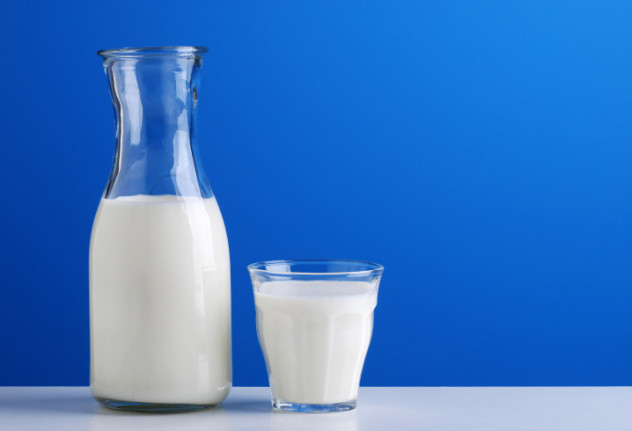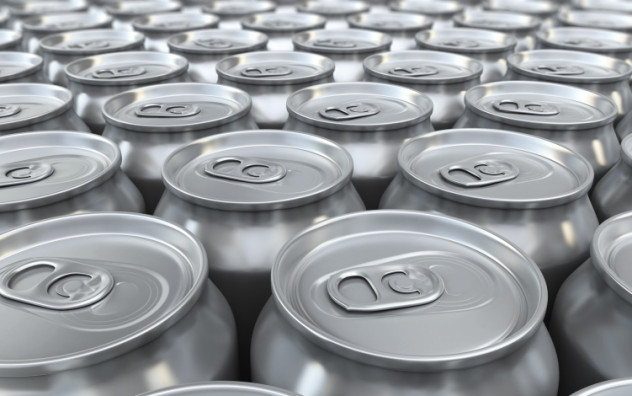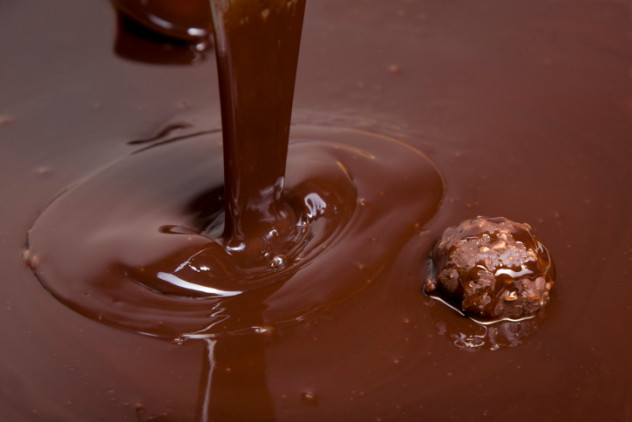 Movies and TV
Movies and TV  Movies and TV
Movies and TV  Humans
Humans 10 Times Scientists Were Absolutely Sure… and Absolutely Wrong
 Our World
Our World 10 Pivotal Moments for Life on Earth
 Movies and TV
Movies and TV 10 Most Realistic Medical TV Shows of All Time
 Creepy
Creepy 10 Eerie & Mysterious Ghosts of the Pacific Coast
 Weird Stuff
Weird Stuff 10 Typos That Accidentally Changed History
 History
History 10 Times Trickery Won Battles
 Technology
Technology 10 Awesome Upgrades to Common Household Items
 Misconceptions
Misconceptions 10 Hilarious (and Totally Wrong) Misconceptions About Childbirth
 Weird Stuff
Weird Stuff 10 Warning Labels That Exist Because Someone Actually Tried It
 Movies and TV
Movies and TV 10 Zombie Movies That Will Actually Terrify You
 Humans
Humans 10 Times Scientists Were Absolutely Sure… and Absolutely Wrong
 Our World
Our World 10 Pivotal Moments for Life on Earth
Who's Behind Listverse?

Jamie Frater
Head Editor
Jamie founded Listverse due to an insatiable desire to share fascinating, obscure, and bizarre facts. He has been a guest speaker on numerous national radio and television stations and is a five time published author.
More About Us Movies and TV
Movies and TV 10 Most Realistic Medical TV Shows of All Time
 Creepy
Creepy 10 Eerie & Mysterious Ghosts of the Pacific Coast
 Weird Stuff
Weird Stuff 10 Typos That Accidentally Changed History
 History
History 10 Times Trickery Won Battles
 Technology
Technology 10 Awesome Upgrades to Common Household Items
 Misconceptions
Misconceptions 10 Hilarious (and Totally Wrong) Misconceptions About Childbirth
 Weird Stuff
Weird Stuff 10 Warning Labels That Exist Because Someone Actually Tried It
10 Goofy Myths About Food You Probably Believe
Knowing how to eat properly can be difficult, especially since there are a huge number of misconceptions about food and nutrition. Many of these myths get passed around until they become conventional wisdom, unchallenged by those who spread them them. But we should always be careful of believing unsupported claims, especially when they relate to our food.
10Drinking Lots Of Milk Helps Your Bones

Everyone knows that drinking milk helps strengthen your bones, allowing you to grow up big and strong. After all, calcium is good for you and milk is rich in calcium. Unfortunately, the truth might be a little more complicated than that.
Sweden’s Uppsala University recently released the results of a huge study following 61,400 women and 45,300 men. Researchers spent years tracking the diet of both groups, then monitored the women’s health for a further 20 years and the men’s health for 11 years. The results revealed that drinking milk was associated with higher mortality rates for both sexes and higher chances of bone fractures for women. Women who drank at least three glasses of milk a day were twice as likely to have died by the end of the study and 50 percent more likely to have suffered a hip fracture.
In an interview with the BBC, lead researcher Karl Michaelsson suggested that the results could be explained by milk’s sugars, lactose and galactose, which have been shown to accelerate aging processes like inflammation and oxidative stress. Interestingly, while drinking lots of milk seemed to increase the likelihood of a bone fracture, study participants who ate lots of yogurt and other fermented dairy products actually were much less likely to sustain a bone fracture. Fermentation is known to significantly decrease the lactose content of dairy products.
Meanwhile, scientists at Harvard University reviewed 25 years of data and concluded that there is no significant evidence to suggest that drinking milk helps keep people safe from osteoporosis. There are also concerns that heavy milk intake may increase the risk of prostate and ovarian cancer. The university’s School of Public Health cautions against the currently recommended 2–3 glasses of milk a day, a level of consumption which has not been shown to reduce bone problems and probably comes with increased health risks. According to Harvard, a glass of milk every day or so is indeed a good source of calcium, but anything more than that is probably just overkill.
9Energy Drinks Give You Energy

Despite what their name would suggest, energy drinks are a pretty ineffective way of giving yourself energy. Most energy drinks are a mixture of sugar and caffeine, with an amino acid called taurine thrown in for good measure. Some also contain a South American plant called guarana, but that’s actually just another source of caffeine. A few energy drinks boast of including ginseng and B-vitamins, but they typically don’t contain enough of either to have any real impact. Since the supposed effects of taurine on concentration and athletic performance remain controversial, it’s hard to assess its inclusion in energy drinks. That leaves sugar and caffeine as the two key ingredients.
Sugar does give you a short energy burst, but it doesn’t last long and is usually followed by a crash. Essentially, you’re just borrowing energy from yourself in the future. Heavy sugar consumption is also strongly associated with weight gain and other health problems. A recent study in the journal Pediatrics found that people who consumed 2–3 energy drinks per day might be getting as much as 4–6 times their recommended daily sugar allowance from the drinks alone.
Caffeine is more effective at giving a feeling of increased energy without a severe crash afterward. Unfortunately, you have to drink a lot of it to get the full energizing effects, which is why energy drinks are usually packed with it. That’s a problem, since one of the ways caffeine boosts energy is by blocking the adenosine receptors in your brain, preventing feelings of sleepiness. These effects can last up to 12 hours, meaning that heavy caffeine usage is a surefire way to give yourself insomnia. It’s also associated with high blood pressure and an increased heart rate.
So frequent use of energy drinks is associated with insomnia from the caffeine and weight gain from the sugar, two effects which ensure you’ll have even less energy in future. If you really want to boost your energy levels, there’s simply no substitute for a good diet, regular exercise, and adequate sleep. And if you need a little boost on top of that, then the occasional energy drink won’t hurt.
8Wooden Cutting Boards Are Dangerous

There’s a popular belief that it’s unsanitary to cut raw meat on a wooden cutting board. The idea is that wood is porous and absorbs bacteria, putting people at risk from harmful bacteria like E. coli and Salmonella when the cutting board is subsequently used to chop up vegetables or other foods. The US Department of Agriculture even recommended using plastic cutting boards instead. This intrigued prominent food scientist Dean O. Cliver, who resolved to research ways to safely disinfect wooden cutting boards. But when the Department of Agriculture admitted they had no scientific basis for their recommendation, Cliver decided to investigate.
Cliver’s study found that it was extremely difficult for disease-causing bacteria to transfer from a wooden cutting board to food. In fact, it seemed like the wood’s absorbent properties actually helped, since bacteria was drawn deep into the wood, causing it to gradually “disappear” from the surface of the board. The bacteria initially remained alive in the wood, but it was too far from the surface to do any harm before it eventually died. Cliver could only detect it by hacking the board to pieces or forcing water completely through the wood at high pressure.
Interestingly, wood’s tendency to hang onto bacteria might actually give it a slight advantage over plastic. To simulate realistic cooking conditions, Cliver covered wood and plastic cutting boards with bacteria and then used a sharp knife to scratch the surface, as might happen when chopping food. He then thoroughly cleaned the boards and tested them for bacteria, discovering that more bacteria were recoverable from the scratched plastic boards than the wooden ones.
Cliver considered this the main difference between wood and plastic boards, observing that new plastic boards were easier to clean than wood, but “wooden boards that had been used and had many knife cuts acted almost the same as new wood, whereas plastic surfaces that were knife-scarred were impossible to clean and disinfect manually.” However, even deeply scarred plastic boards could easily be cleaned mechanically using a dishwasher.
7Gum Takes Seven Years To Digest

Most of us probably remember being warned not to swallow our bubblegum because it would stay in our digestive tract for a whole seven years. It’s one of the most famous and persistent urban legends out there. And while it’s not clear where the story originated, it is clear that it’s completely false.
In fairness, chewing gum is partially immune to the digestive process. The sweeteners, sugars, and oils in the gum will get broken down in your stomach, but the gum’s base is indigestible and will pass through your system extremely slowly. But not seven years slowly. In reality, it’ll probably be gone in about a week or so. If it really took years to digest, gastroenterologists would constantly be finding gum in patients’ digestive tracts, which isn’t the case at all.
And bear in mind that gum base being indigestible doesn’t mean it’s bad for you to swallow. Humans eat indigestible plant matter all the time. We can even pass foreign objects like metal coins as long as they’re less than 2 centimeters (0.8 in) in diameter. Gum generally only becomes a problem if large amounts of it are swallowed in an extremely short period, in which case it can cause constipation. For obvious reasons this generally involves very young children and surgery may be required to remove the resulting blob of gum.
6You Should Drink Eight Glasses Of Water A Day

The idea that we should drink eight glasses of water every day is another common urban legend, and just like the seven year gum myth, it’s not entirely clear where it even came from. According to Snopes, the oldest example of the myth appears to be a 1945 statement by the Food and Nutrition Board of the National Research Council, which suggested that people should consume at least 2.5 liters (85 oz) of water a day. That would be approximately eight glasses. However, the same statement noted that most of that 2.5 liters would come from water contained in food. In other words, the statement wasn’t saying you should drink eight glasses of water a day at all.
In reality, there is no “one size fits all” method of determining how much water you need. The exact amount you should drink depends on several factors, including your body size, the local climate, and how much physical activity you undertake. The Institute of Medicine suggests that the average adult man should drink about 13 cups of liquid (not necessarily water) every day, while the average adult woman should drink about nine cups per day. It’s also important not to drink too much water, as drinking an excessive amount can overwhelm the body, causing symptoms ranging from lightheadedness, dizziness, and nausea to delirium, seizures, and comas. But there’s no need to worry about it too much either way. Drink enough to quench your thirst and you should be fine.
5All Chocolate Is Bad For You

No need for guilt, chocolate lovers! It turns out that chocolate isn’t simply junk food after all. Chocolate can even be healthy for you. According to a study recently published in the American Journal Of Clinical Nutrition, the consumption of cocoa products like chocolate is linked to noticeable decreases in blood pressure. Another study looked at the eating habits of 21,000 adults in England, concluding that people who ate two chocolate bars a day were 11 percent less likely to experience a heart attack or stroke compared to people who ate no chocolate at all. Chocoholics were also a whopping 25 percent less likely to die from a cardiovascular condition.
However, the authors of the English study cautioned that it only demonstrated a correlation between eating chocolate and a lower risk of cardiovascular disease, rather than conclusively proving that one caused the other. For example, people with a high risk of heart disease might deliberately avoid eating chocolate or other “junk” foods, while those with a clean bill of health feel free to pig out. So the authors decided to carry out a review of the existing research on chocolate and health. The results were even more compelling, suggesting regular chocolate eaters were up to 45 percent less likely to die from heart disease than their peers. Interestingly, most participants in the study preferred milk chocolate to dark chocolate, which is traditionally believed to be healthier.
But don’t give up on dark chocolate just yet, since it might be the only candy in the world that can actually help you lose weight (milk and white chocolate, with their added milk and sugar, definitely won’t). A study from the University of Copenhagen found that a small piece of dark chocolate was an effective way to curb cravings for almost all other types of food. Meanwhile, researchers at the University of L’Aquila in Italy found that people who ate dark chocolate once a day for 15 days in a row decreased their insulin resistance by almost 50 percent, helping to reduce the risk of high blood sugar and diabetes. The fats in dark chocolate also appear to partially block the absorption of sugar into the bloodstream. Of course, none of this is to say you should wolf down chocolate like a crazed Augustus Gloop, but if you’re looking for a daily treat, a bar of dark chocolate might not be a bad bet.
4All Carbs Are Bad For You

In the popular consciousness, all you have to do to lose weight is cut back on carbs. After all, our bodies use carbohydrates to produce glucose, which is our main source of energy. Excess glucose is converted to fat. When you eat fewer carbohydrates, your body produces less glucose and has to burn off fat for energy, propelling you to a lucrative new modeling contract. At least, that’s the general idea. The reality is a little more complicated.
For starters, just like all chocolate isn’t necessarily bad for you, many dieticians now argue that cutting down on all carbohydrates, as recommended by the Atkins diet and similar regimens, isn’t the best way to go about it. Instead, they argue in favor of cutting carbs that rank high on the glycemic index, which measures how long it will take a carbohydrate to be converted to glucose and enter your bloodstream. Foods that are low on the glycemic index—including fruits, vegetables, and whole grains—promote a fast metabolism, allowing your body to burn off calories quickly. Meanwhile, carbohydrates that rank highly on the index—including processed foods, cornflakes, and potatoes—may take longer to burn off. In other words, one calorie of veggies doesn’t necessarily equal one calorie of white bread.
Low-carb diets are probably better at helping you to lose weight, but they also help slow your metabolism, making it hard to keep those pounds off. In fact, studies have found almost no benefits of a low-carb diet after 1–2 years. A 2014 paper concluded that the average difference after a year of no carbs and lots of protein might be as little as 0.5 kilograms (1 lb). They’re also lacking in fiber, which helps slow down the absorption of nutrients, helping to lower blood sugar levels and the risk of type-2 diabetes.
There are other health concerns, too. In 2012, researchers at Boston Children’s Hospital compared an Atkins-like diet, where only 10 percent of calories came from carbs, with a more balanced diet, where at least 40 percent of calories came from carbs ranking low on the glycemic index. The Atkins-style diet had more immediate impact in terms of weight loss, but it also caused cholesterol spikes and increased risk of heart disease, strokes, and diabetes. Meanwhile, the mixed diet offered moderate weight loss and actually reduced the risk of chronic diseases.
Ironically, the low-carb diets might not have been a huge improvement over traditional diets anyway. A study published by the National Center for Biotechnology Information compared low-carb diets and low-fat diets. Those on low-carb diets had slightly less cholesterol, but an increase in high-density lipoprotein cholesterol and triglycerides. There was no significant difference between the two diets when it came to body weight or metabolic risk factors.
3Gendered Food Is A New Trend

The Internet loves to mock hilarious “pointlessly gendered products,” including earplugs, soda, flash drives, Bibles, and donuts. Sociologist Lisa Wade, who runs Pinterest’s Pointlessly Gendered Products board, writes that such products can be damaging because they help reinforce gender roles. And the products in question are mostly hilariously bizarre, including a men’s baby carrier resembling a bulletproof vest (available in black or khaki), the same laxative pills branded in pink and blue bottles (which cost the same, even though the pink bottle contained fewer pills), and an attempt to rebrand Q-tips as “Men’s Ultimate Multi-Tool.”
This has also led to plenty of criticism of the “emerging trend of gearing food toward specific genders.” Canada’s Stonehill Bakery even prompted a national outcry when it tried to introduce bread for men and women. In response, the bakery protested that the breads were tailored to the genders’ different nutritional needs, with the women’s bread containing calcium and iron, while the men’s bread was rich in zinc and magnesium. That might not be a terrible idea (although nutritionists caution that you probably shouldn’t be trying to get all your iron from bread). Stonehill’s biggest mistake was probably the packaging, which compared “hearty” men’s bread to the pink-wrapped, “light” women’s product.
Marketers were actually subtly gendering products decades before Stonehill blundered onto the scene. For example, sensory psychologist Marcia Pelchat has noted that women are genetically inclined toward sweeter tastes, but dislike bitterness. Hence, chocolates and other sweet products are often marketed to women, while ale and other bitter products are usually aimed at the male consumer. Women also feel greater societal pressure to eat healthy, resulting in health food marketing having a distinct feminine bias. So do women eat more yogurt because the advertising is targeted at them, or do yogurt marketers target women because they preferred the product anyway? Either way, gendering of food products is definitely not a new “emerging trend.”
2Natural Is Always Better

Customers love food labeled “natural,” prompting food marketers to slap the term on anything they can. But it’s actually not really clear what exactly constitutes a “natural” food. The Food and Drug Administration (FDA) currently doesn’t have a strict definition for the term, explaining:
From a food science perspective, it is difficult to define a food product that is “natural” because the food has probably been processed and is no longer the product of the earth. That said, FDA has not developed a definition for use of the term natural or its derivatives. However, the agency has not objected to the use of the term if the food does not contain added color, artificial flavors, or synthetic substances.
However, the US Department of Agriculture (USDA) does restrict and monitor the use of the word “organic.” As you can imagine, this tends to annoy certified organic producers, who often find themselves competing with unregulated “natural” foods and customers who can’t tell the difference.
Organic producers can’t complain too much, though, since they also benefit from some consumer misconceptions. For example, surveys have found many people buy organic products because they’re uncomfortable with the use of pesticides. But large organic farms can and do use a wide variety of pesticides, fungicides, and other chemicals. So long as the pesticides are non-synthetic, the USDA has no problem with their use in organic farming. However, there’s no reason to believe that non-synthetic pesticides are necessarily better than their synthetic counterparts. There’s also no particular reason to believe organic foods are better for you than non-organic foods, and large organic farms can have severe environmental consequences just like their non-organic counterparts.
1Fried Foods Always Increase Heart Disease Risk

As covered earlier, chocolates and carbs often get undeserved bad reputations. However, fried food might have the worst reputation of them all. And it’s true that you probably shouldn’t be mainlining KFC on a daily basis. But there are some forms of fried food that can be beneficial.
A study published in the British Medical Journal surveyed 41,000 Spanish adults over 11 years, monitoring how much fried food each consumed daily. The follow-up period of the study saw 606 heart-related events and 1,134 total deaths. However, the researchers found that heart disease and death rates did not correlate with fried food consumption. In fact, the researchers concluded that there was no proven link between heart disease and food fried in sunflower or olive oil.
However, it’s important to keep in mind that the study involved the Mediterranean diet, which is somewhat different from the deep-fried fast food popular in many cultures. It also focused solely on heart disease and didn’t take into account the impact of fried food on obesity or other medical issues. Finally, the study’s authors were careful to note that they couldn’t draw any conclusions about food fried in anything other than olive oil or sunflower oil.
Still, it’s worth bearing in mind that not all fried food poses a grave risk to your cardiac health. In fact, home-cooked fried food can be quite healthy, so long as you consider what you’re frying and how you are frying it. There are plenty of healthy fried food recipes online, while many sites also recommend cooking at exactly the right temperature for the oil you’re using.
Patrick W. Dunne studied Business and Psychology at Chaminade University of Honolulu and currently works as a full-time marketer and part-time freelance writer. You can follow him on LinkedIn and and Twitter.








